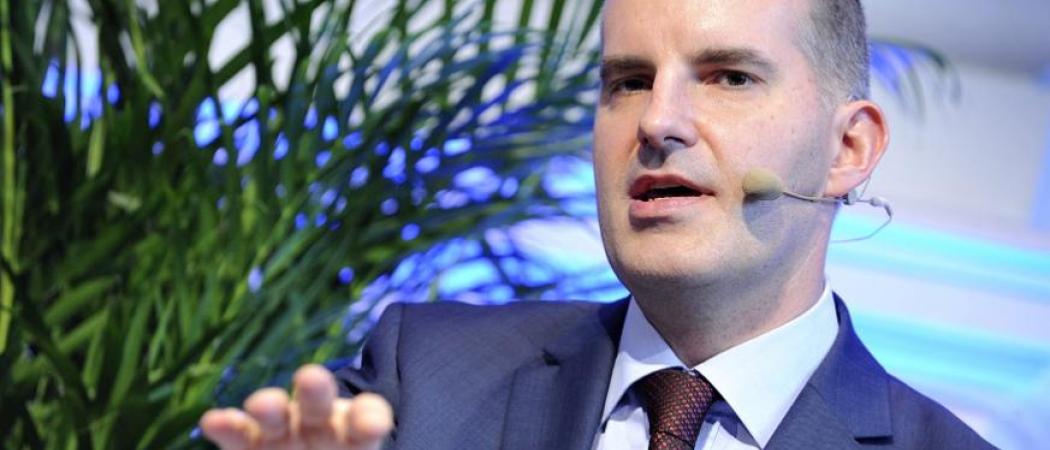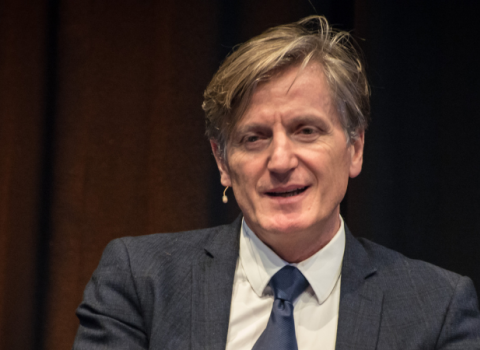Third in-depth review of EU innovation hub finds a body working hard to fix its problems, and beginning to show some return on its huge investment

Martin Kern, EIT interim director; Source: EIT
A new evaluation of the EU-funded European Institute of Innovation and Technology concludes that the body is making progress in nudging forward research in climate change, energy and digital fields, but warns that it is unlikely to meet targets for its networks to become financially sustainable.
The third review of the body in under two years offers a largely positive assessment on the state of the institute established to help transfer research and innovation from academia into commercial applications.
The EIT has attracted a fair share of criticism recently, starting with a big review by the European Court of Auditors, the EU’s accounting watchdog, in April 2016, which slammed the body for showing very little for its investment. A follow-up report by a special panel of experts convened by the European Commission largely confirmed many of the body’s serial shortcomings.
The latest report by ICF and Technopolis, two research firms hired by the Commission, looks at the EIT over the period 2011-2015 and recounts many of the problems faced by the institute and efforts to address them.
It echoes questions raised elsewhere about the long-term viability of the EIT’s many distributed innovation incubators, but also offers evidence of successful innovations that could one day prove useful for tackling big challenges such as climate change. The report comes as the EU enters what is likely to be a long debate over the future of its budget; while some argue for a rise in overall spending for research and innovation activities – which currently take up 8 per cent of the EU budget – others are expecting a cut.
The EIT welcomed the conclusions. “For the first time, positive results from the EIT are recognised,” Martin Kern, the Budapest-based interim director of the EIT, said in an interview.
Addressing problems
The complexity of the EIT, a distributed network of academic and business partners including Siemens, Ericsson and Philips, stems in part from the original design. But the institute’s operations were further complicated by add-on targets later, introduced in a manner which was “neither conducive to effectiveness nor to efficiency”, the report said.
Companies and universities that have stopped collaborating with the EIT in recent years cite changing policies around accounting procedures and reporting duties, the report said. The introduction of membership fees in some of the EIT networks was another disincentive. The distribution of money to projects was not sufficiently transparent, the process of evaluating proposals was hazy, and feedback on proposals was inadequate, the report said. Notwithstanding, an EIT spokeswoman said that the overall number of members has risen to more than 1,000.
The EIT and the Commission accepted most of the past criticisms and Kern says there has been a big effort to address all the concerns.
“Since the auditor’s report, we have made a lot of progress on simplification; for example, we improved many administrative issues, and we updated the KPIs,” Kern said.
Since its formation, EIT has faced many management problems, shuffling through five different directors in its first six years; since Kern took over in 2014, there has been greater stability. Now, the report finds that “significant work is being done to improve clear roles and responsibilities.”
The report said there was “a widely acknowledged need” for an improved system of targets, or ‘key performance indicators’ that measure the impact of EIT-funded collaborations. A new set of indicators was introduced this year “which will allow for a better assessment to be made of the results of the KICs’ activities,” the report said.
Long road to self-sufficiency
EIT operates through what it calls Knowledge and Innovation Communities, or KICs: groups of universities, research institutes and businesses working in specific fields. The three initial KICs set up in 2009 cover information and communication; sustainable energy; and climate-change. Two additional KICs formed in 2014 target health products and services, and raw materials.
The future solvency of these KICs is the main problem identified by the review. In common with previous assessments, the evaluation found that KIC plans for achieving financial sustainability look “highly ambitious”.
The dependency on EIT funding is supposed to fall from close to 90 per cent in 2016 to 27 per cent in 2022 and then to 10 per cent by 2025 – 15 years after the first-wave KICs were established.
The first wave KICs set up in 2009 are now entering a phase in which the EIT grant will start decreasing, but by the end of 2015, external funding still only accounted for 15 per cent of their total funding.
Of the first generation KICs, the authors said that it is highly doubtful that the Climate KIC can become financially independent by 2025. This is perhaps not surprising considering the scale of market failures in renewable fields, they noted.
EIT Digital and EIT InnoEnergy, meanwhile, are pursuing “more diversified approaches” towards sustainability, but there is doubt here also as to whether they can meet their target.
The evaluators said potential future sources of cash include equity positions in EIT-backed start-ups and royalties from EIT-supported projects, but also raised the fundamental question of whether financial sustainability for KICs will ever become feasible – a goal, it is suggested, that could be “deferred or partly-abandoned”.
The report also questioned whether such a goal is even desirable, given the core purpose of the EIT is to invest in areas that would not have otherwise been pursued by the private sector.
EIT impact – hard to pin down
As the EIT KICs have only ran for seven years, and for more than half of this period had only three KICs, “It is still early to be looking for the impacts of the EIT on innovation systems, the effects of which will take even longer to bear fruit,” the report said. “Systemic change takes time.”
What is clear now though is that the economic impact of the different KICs varies significantly. Between 2010 and 2015, the three first-generation KICs were involved in launching a total of 224 new products, services or processes onto the market, with Climate-KIC responsible for almost two thirds of this amount.
Overall, the cost effectiveness of the institute is hard to put a figure on, the authors said, owing to “inconsistencies in the reporting of expenditure and results data” and a lack of data on expenditure. In some cases the evaluators could not distinguish between spend on education, entrepreneurship and innovation.
The evaluators conclude that EIT has left more of a footprint on education than business creation or start-up support. Around 820 students have so far graduated from EIT-labelled Masters and PhD programmes; only a minority of this group have started a business.
There is still a low level of awareness and knowledge of the EIT and its brand in Europe, the report said, while evidence of EIT influence on policy is “somewhat weak”.
In an effort to boost its presence, the institute recently opened a new hub in Brussels. “It’s a clear statement that we’re here and we have big plans,” said Kern.
Editor's note: This article was corrected on October 20 to clarify the EIT's financial targets, budget and membership





 A unique international forum for public research organisations and companies to connect their external engagement with strategic interests around their R&D system.
A unique international forum for public research organisations and companies to connect their external engagement with strategic interests around their R&D system.